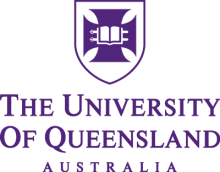If you had told Samuel Hinton six months ago that he would be spending half his working hours crunching corona data, he would probably have assumed you were talking about the plasma aura around some star.
Instead, the University of Queensland astrophysicist is leading a project to synthesise data on Covid-19 patients from 48 countries.
“The skills that you get from astrophysics – it turns out they’re fairly translatable,” Dr Hinton said. “In astrophysics we get raw, messy data that we can’t use from a telescope. We…take this data, homogenise it, process it [and] store it somewhere [so that] we can actually make use of it.
“It’s the same in the Covid collaboration. We take raw, messy data – but instead of from a telescope, we take it from hospitals. You swap the telescope [for] 350 hospitals and hope you can get something of value.”
As lead data analyst for the Covid-19 Critical Care Consortium, Dr Hinton has constructed what the Australian Academy of Science refers to as a “data science pipeline”. It ingests raw clinical data from around the world and processes it into a usable form for machine learning and statistical analysis.
Dr Hinton also built and maintained an “interactive dashboard” which aggregates the data and provides snapshot summaries for clinical teams. “You could say: ‘What is the chance that a person would develop this complication, whether they’re male or female, whether they come from the US or not?’”
The pandemic has bowled up new surprises for Dr Hinton, who was a contestant in the reality TV show Australian Survivor during his doctoral studies in 2018. Early this year he accepted a Chamberlain postdoctoral fellowship with the Lawrence Berkeley National Laboratory in the US. “I’m supposed to be there pretty soon, but obviously that isn’t happening.”
He got married in April and spent his wedding night plotting data for clinical staff at the Prince Charles Hospital in Brisbane. “We were having the global consortium meeting the next night and needed the plots done.”
The Academy has highlighted Dr Hinton’s efforts as an example of the unexpected spin-offs from Australia’s research strength in astronomy. A mid-term review of Australia’s 10-year plan for the discipline, overseen by the Academy’s National Committee for Astronomy, has found that Australia’s optical and radio observatories – currently among the world’s best – have fostered the application of advanced data analytics in completely unrelated fields.
Other by-products have included technologies that boost the output of solar farms, improve situational awareness and reduce vibrations in harsh environments.
Meanwhile, Australian researchers have played their part in some of the biggest astronomical discoveries of the past decade. They include the detection of gravitational waves and the use of mysterious “fast radio bursts” to find the universe’s “missing matter” floating around in interstellar space.
Review panel member Tamara Davis said that Australia had a natural advantage in astronomy research “because of our radio-quiet skies and important southern hemisphere location. Many countries want to be involved in telescopes in Australia.”
The review offers nine recommendations to consolidate Australia’s standing in the field. They include completing Australia’s component of the Square Kilometre Array radio observatory, funding Australian-built instrumentation for the Giant Magellan Telescope in Chile, laying the foundations for a gravitational wave detector in the southern hemisphere, and achieving full membership of the European Southern Observatory.
Register to continue
Why register?
- Registration is free and only takes a moment
- Once registered, you can read 3 articles a month
- Sign up for our newsletter
Subscribe
Or subscribe for unlimited access to:
- Unlimited access to news, views, insights & reviews
- Digital editions
- Digital access to THE’s university and college rankings analysis
Already registered or a current subscriber?











